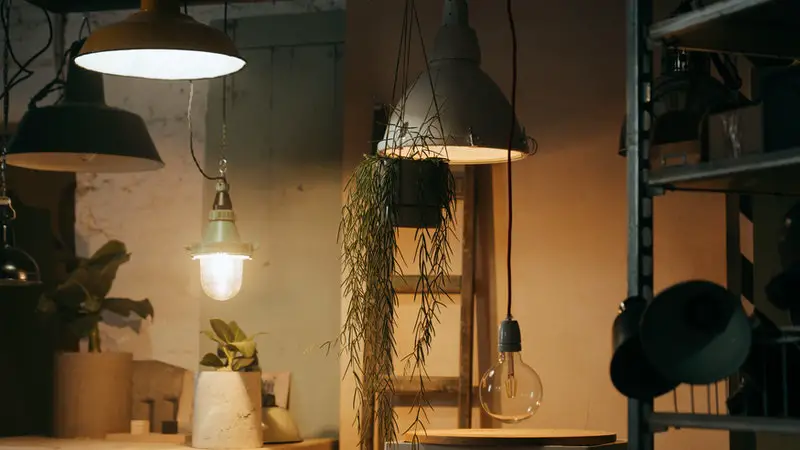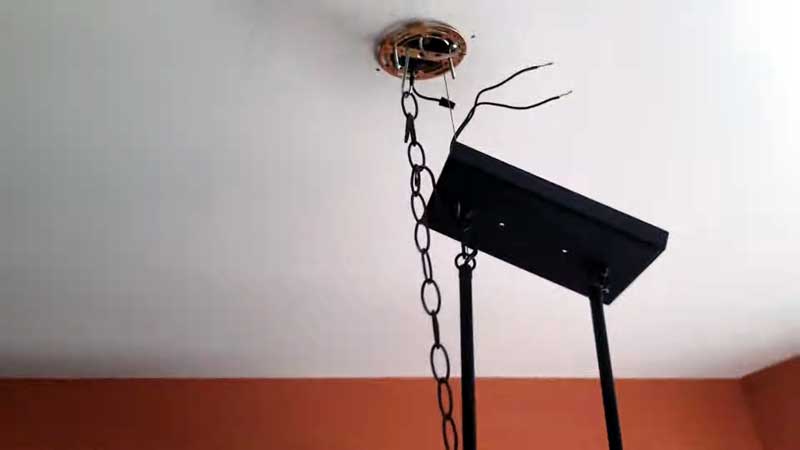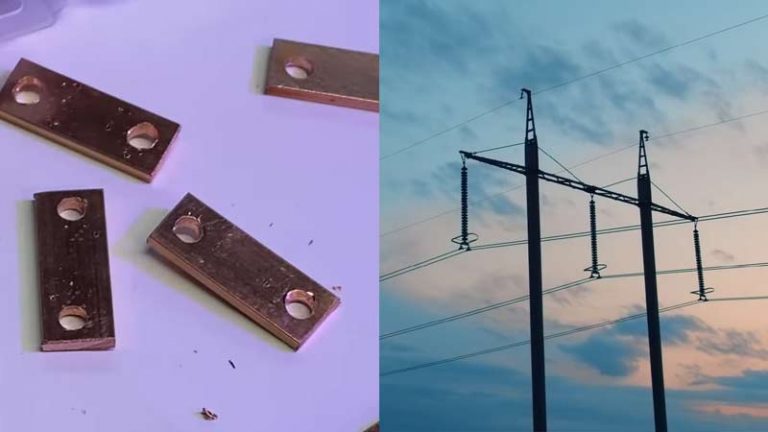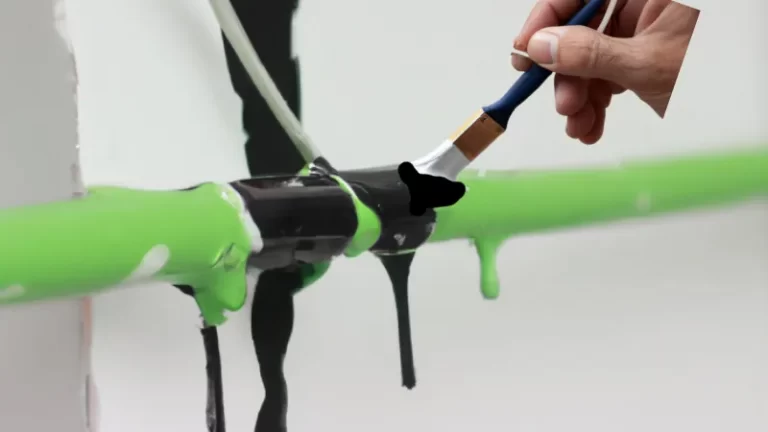Can I Install a Light Fixture Without a Ground Wire

Light fixtures are used to illuminate places and objects in the rooms of your house. They can be installed in many places besides your ceiling, such as walls, tabletops, floors, and table lamps. Installing a light fixture is a great way to improve the look of a room. It also adds more light to it.
Always check local building and electrical codes before installing a light fixture and consider hiring a qualified electrician for anything beyond basic, low-voltage lamp work. Wiring a light yourself can be a way to learn about electrical systems, but only when you understand and follow code, use listed materials, and verify the circuit is de-energized. A proper equipment grounding conductor provides a low-impedance path for fault current so overcurrent protection can operate; grounding alone is not a substitute for correct circuit protection and safe installation practices.
You'll Learn About
Grounding and Its Importance
The ground (equipment grounding conductor) is a conductor used to connect non-current-carrying metal parts of equipment, boxes, and enclosures to the building grounding/bonding system and ultimately to the grounding electrode system. Its purpose is to help ensure that exposed metal parts do not become energized and to provide a path that allows protective devices (breakers/fuses) to clear faults. The function of the ground wire includes safety from electric shock and helping protective devices operate correctly; it is not installed primarily to prevent radio frequency interference.
- A correctly installed grounding system reduces the risk of electric shock and helps overcurrent protection clear actual faults—this protects people and property.
- The equipment grounding conductor (EGC) is not intended to carry normal load current; it carries current only during a fault condition (or when intentionally bonded for specific equipment).
- Grounding and bonding are separate but related: grounding ties the electrical system to earth (grounding electrode system) and bonding ensures conductive parts are at the same electrical potential to reduce shock risk.
- Always use materials and methods that are listed and acceptable to the local authority having jurisdiction; improper attachments or connectors can corrode or loosen and defeat the grounding function.
- If you are unsure about any grounding or bonding connection, consult a licensed electrician or inspector before leaving an installation unverified.
What is a Light Fixture?
A light fixture, light fitting, or luminaire is an electrical device used to create artificial light by using an electric lamp. All light fixtures have a fixture body and a light socket to hold the lamp and allow for its replacement.

Fixtures may also include switches, mounting hardware, shades, diffusers, drivers (for LEDs), and wiring devices. There are many different fixture types — ceiling, pendant, recessed, wall sconce, vanity, landscape, and portable lamps — so choose a fixture appropriate for the location and intended use.
When shopping, confirm lamp type compatibility (LED, incandescent, CFL), maximum wattage or lumen rating, dimmer compatibility, and the fixture’s listing (UL/ETL/CSA) for the intended location.
Light Fixture Without a Ground Wire — Is It Possible?
A metal fixture installed on a circuit without an equipment grounding conductor can present a shock hazard if the fixture becomes energized; therefore, it is not simply “okay” to leave metal fixtures ungrounded unless the fixture is a listed Class II (double-insulated) product that is specifically designed and labeled as not requiring a ground.
If the junction box or branch circuit has no equipment grounding conductor, acceptable options (per code and local rules) include: running a grounding conductor to the box and fixture, using a listed grounding/bonding method, replacing the cable with a grounded cable, using a Class II (double-insulated) fixture that does not require grounding, or providing GFCI protection for the circuit where permitted and labeled appropriately. These options must be done using listed materials and may require an electrician or permit.
Do not assume screws or color markings alone indicate correct wiring; identify conductors by function (hot, neutral, equipment ground) and follow code conventions: in typical U.S. AC wiring, insulated green or green-yellow and bare conductors are equipment grounding conductors, white or gray is neutral (where used), and black/red are hot (live) conductors. Battery color conventions (red positive/black negative) differ from AC color conventions—confirm the system before connecting.
The presence of a green or orange screw is not a universal indicator that wiring is correctly installed; use proper bonding points and listed grounding screws/clamps and consult local codes or an electrician.
You cannot “invent” a grounding electrode or simply attach a pigtail to a random metal pipe unless that pipe is the building’s grounding electrode and the connection meets code; water piping can be part of the grounding electrode system only if the connection and materials meet the requirements and are not plastic downstream of the connection. Always use approved clamps and methods and have the work inspected when required.
Installing a Light Fixture When No Ground Conductor Is Present
If your ceiling box has no equipment grounding conductor, do not improvise unsafe connections. Confirm the situation and choose an appropriate, code-compliant solution: run a proper EGC to the box, replace the cable, use a listed Class II fixture, or install GFCI protection with proper labeling if the local code allows. These solutions often require a qualified electrician.

Do not rely on non-listed connectors or household screws as substitutes for proper listed parts and connectors. Use wire nuts, listed grounding screws, and mounting hardware intended for the fixture and box.
Safe basic installation steps (overview)
1. Turn off the circuit at the breaker and verify power is off at the fixture location using a non-contact tester or multimeter.
2. Identify the conductors: the hot(s) (commonly black or red), neutral (commonly white or gray), and equipment ground (bare or green/green-yellow) if present.
3. Connect neutrals to neutrals and hot to fixture hot using listed wire connectors; if the fixture has a ground, connect it to the equipment grounding conductor or bond it to a grounded metal box with a listed grounding screw and pigtail.
4. If there is no equipment grounding conductor in the box, choose an approved solution (run a ground, replace cable, use a double-insulated fixture, or provide GFCI protection and label the outlet/fixture per code). Do not leave metal parts floating without a proper bonding/grounding path.
5. Secure the fixture to the box using the listed mounting hardware, restore power, and test the circuit and grounding per local code or have an electrician perform the verification.

Light Fixture Wiring
If any part of these steps is unclear or you cannot confirm conductor identity and continuity, stop and consult a licensed electrician.
Ensure It Is Properly Grounded
You can help ensure your lighting fixture is properly grounded by following these guidelines:
- Use listed grounding clamps and connectors to attach the equipment grounding conductor to the grounding electrode system or to the building grounding conductors; do not use improvised clamps or fasteners.
- If the fixture is metal and the box is metal and the box is already grounded, bond the fixture to the box with a pigtail and a grounding screw or screw terminal provided for that purpose.
- If the circuit lacks a grounding conductor, consider running a grounding conductor or using a listed, permitted alternative (double-insulated fixture or GFCI protection with labeling) per local code.
- After installation, verify the grounding path with a continuity tester or have a qualified electrician test the circuit and grounding with proper instruments.
Tips To Buy a Good Light Fixture
When shopping for a light fixture, make sure to choose the right one that will fit your needs and style of home.
- It is important to purchase a light fitting or luminaire in accordance with the wattage or lumen output of lamps you plan on using it with. Some fixtures are not designed for high-wattage or high-heat lamps.
- Always read the product description and listing (UL/ETL/CSA) to ensure the fixture is rated for the intended location (dry, damp, or wet) and to confirm compatibility with LED drivers and dimmers if you plan to use those features.
- Make sure to take into account where you want the fixture placed in your house when selecting its size and shape. Often, less-used areas can be more cost-effective than purchasing an expensive model that will sit unused most of the time.
- Be aware that many light fittings come in several different finishes, such as chrome, nickel, or brass. Think about what looks best with your décor before making your selection.
- For outdoor or bathroom fixtures check IP or wet/damp location ratings; for dimmable fixtures check driver/dimmer compatibility; prefer fixtures with a clear listing and manufacturer support.
Additional Topics
LED Compatibility and Drivers
When using LED fixtures or retrofit lamps, ensure the fixture’s driver is compatible with the lamp and any dimmer you plan to use. Some LED drivers and lamps are not fully compatible with older dimmer switches; use bulbs and dimmers that the manufacturer lists as compatible.
Outdoor Fixtures and IP Rating
For exterior installations, choose fixtures rated for damp or wet locations and with an appropriate IP rating. Mounting surfaces, sealing, and wiring methods must be appropriate for outdoor exposure and follow code for trenching or conduit as required.
Testing and Safety Devices
Use GFCI protection where required (bathrooms, kitchens, outdoors) and consider AFCI protection where required by code. After installation, verify circuits with a multimeter or have an electrician perform a load and grounding test.
Fixture Maintenance
Keep fixtures free of dust and moisture, replace lamps with the correct wattage or equivalent LED replacement, and periodically inspect mounting hardware and wiring for signs of wear or overheating.
Frequently Asked Questions
What is the purpose of lighting fixtures?
Lighting fixtures are fixtures installed in a room or area for the purpose of providing light to that area. Lighting fixtures come in a variety of shapes and sizes and are available for incandescent, fluorescent, and LED lamps (and integrated LED fixtures).
How do I choose a good-quality lighting fixture?
Consider the fixture type, the size of the room, lumen output (not just wattage), finish, compatibility with dimmers, and the fixture’s listing for the intended location. Choose fixtures from manufacturers with clear specifications and support.
What is the best way to install lighting fixtures?
Install fixtures only when the circuit is de-energized, use listed boxes and connectors, correctly identify and connect hot/neutral/ground conductors, and follow local code. For anything uncertain or for metal fixtures where grounding is required, use a licensed electrician.
Why is it important to install a lighting fixture before the room is finished?
Installing some fixtures early can simplify routing of wiring and placement of boxes, but many fixtures are installed after finishes are in place; plan wiring and mounting locations ahead of finishing work and coordinate with electricians and installers.



